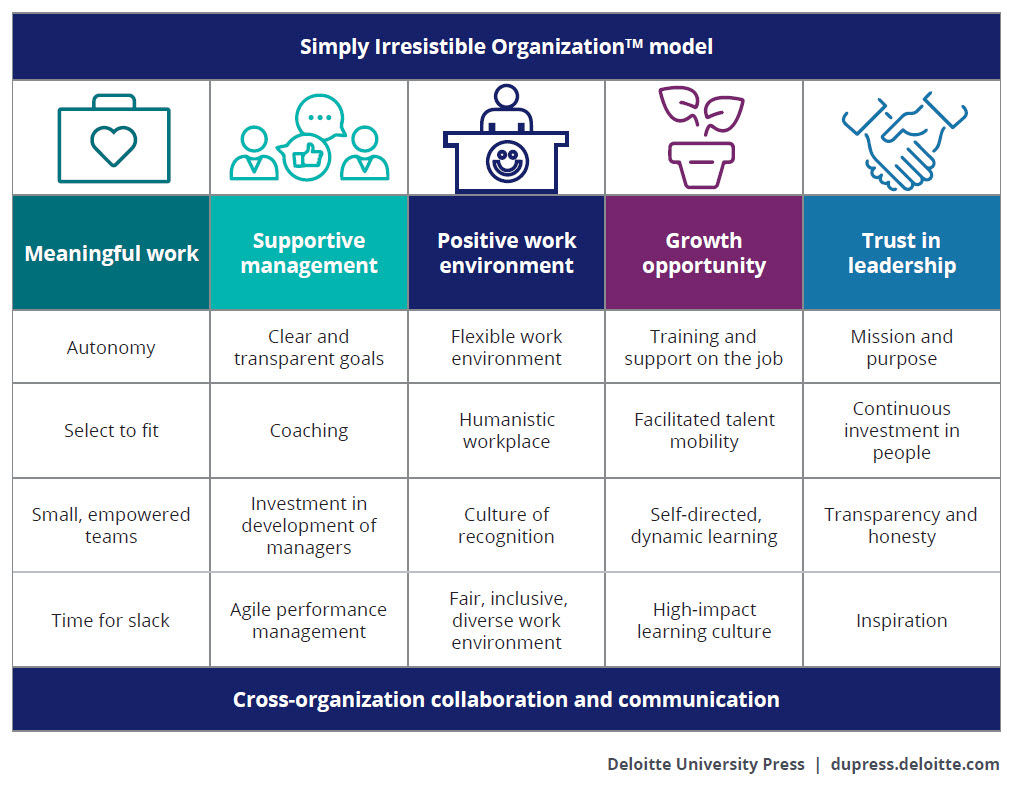Last week, I began exploring the 2017 Deloitte Global Human Capital Trends report, which looked at the challenges ahead for businesses and HR professionals. I have been looking at it from a faculty development perspective. The report is based on analysis of a survey of more than 10,400 business and HR leaders globally, and noted ten trends. I discussed the first three trends last week.
The fourth trend was “The Employee Experience: Culture, Engagement and Beyond.” The underlying theme for this trend was “How we design the employee experience for engagement, productivity, and growth.” This theme lies at the heart of most mission statements for centers for teaching and learning (CTLs). For instance, the mission at the VCU Center for Teaching Excellence where I previously worked (and which has since been disbanded by the university) was:
“…the Center for Teaching Excellence at VCU continues to promote, enhance, and assess teaching effectiveness and student learning through faculty development.”
At Northeastern University’s Center for the Advancement of Teaching and Learning through Research where I last worked, the mission statement read:
“Our mission is to inspire, equip, and connect educators to create and integrate transformative learning experiences using evidence-based practice.”
I see engagement, productivity and growth in both of those statements.
The Deloitte report noted that in a digital world with increasing transparency, employees expect a productive, engaging, enjoyable work experience. The report goes on to note gaps that exist in helping employees balance work and life, align personal goals with corporate goals, provide programs that span generations, and use design thinking as part of the employee experience.
One can easily substitute the word “faculty” for the word “employee.”
The report noted that organizations typically have addressed issues such as engagement, culture, rewards, and learning development as separate and siloed approaches. Yet, employees (faculty) tend to look at what happens to them as an integrated experience. CTLs in the past have been one place where faculty could turn for engagement…and CTLs are uniquely positioned within universities to cross boundaries and provide more holistic services. The report noted that models such as the one shown here begin to address the issues of meaningful work, alignment of purposes, growth and development, rewards and wellness, fairness, inclusion, and authenticity among leadership.
CTLs tend to focus on the column on growth opportunity, but CTLs are positioned to also impact the other columns as well. The report quoted a retail executive as noting:
“We used to prioritize our stakeholders as shareholders first, customers second, and employees third. We now realize we had it backwards. If we put employees first, they in turn take care of customers, and they in turn take care of our shareholders.”
Now take that statement and substitute students for customers and faculty for employees. Strategically, it makes sense to holistically care for faculty, who in turn take care of students, who in turn care for the community (local and global).
At your CTL, how does the faculty experience impact the future of your institution?
{Graphics: Deloitte Press}

